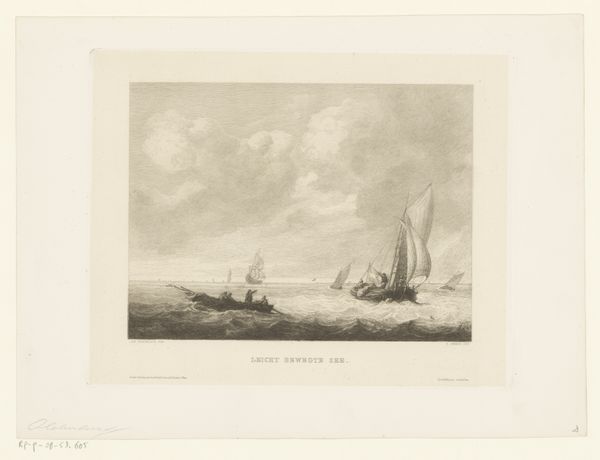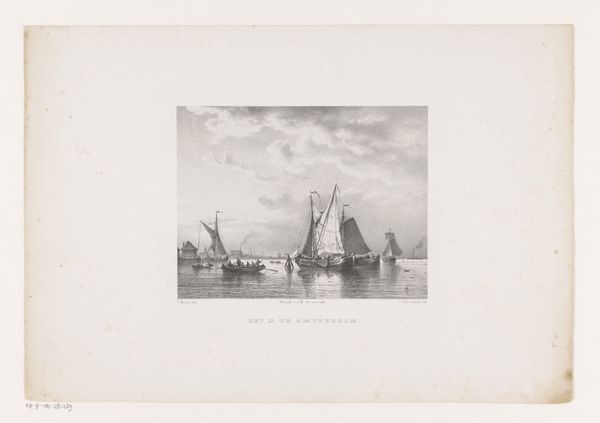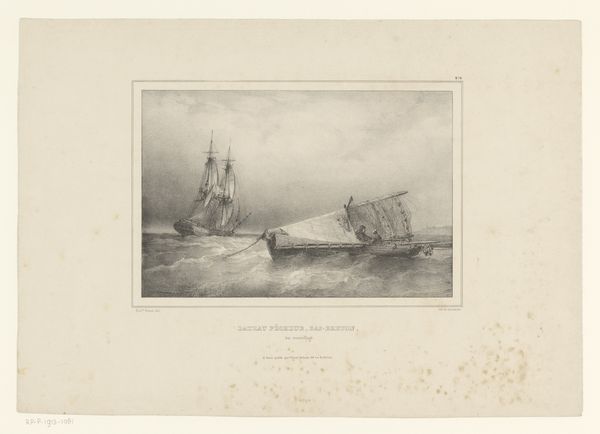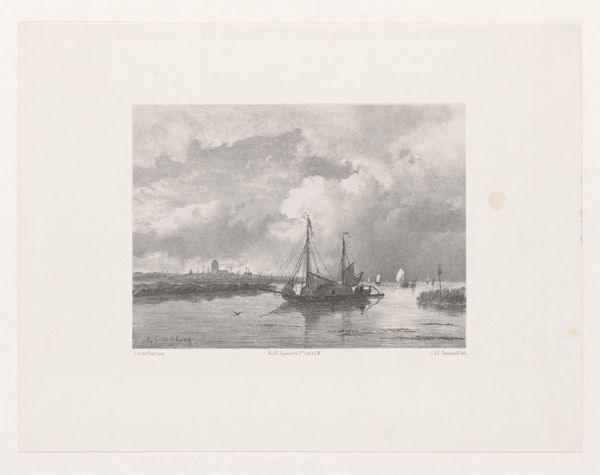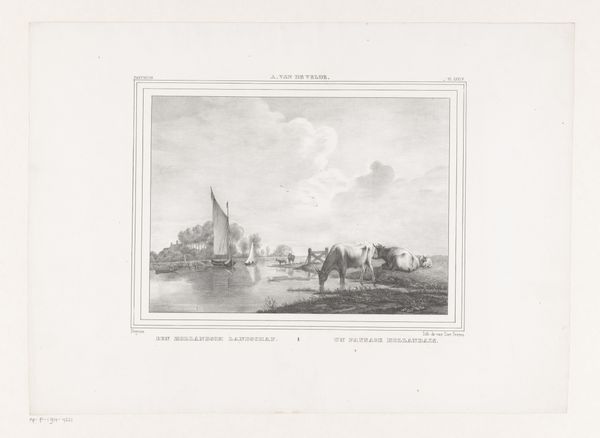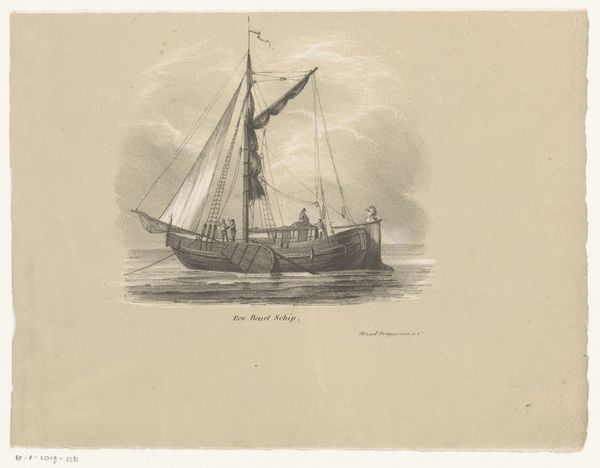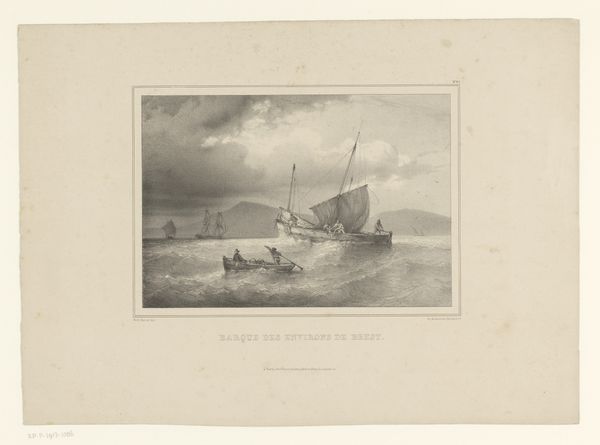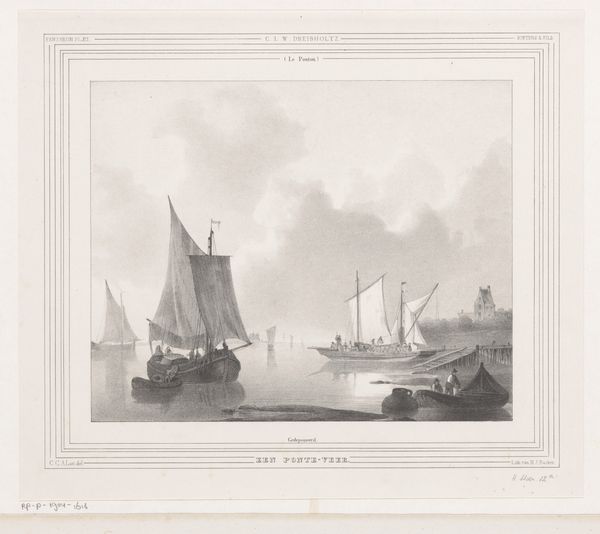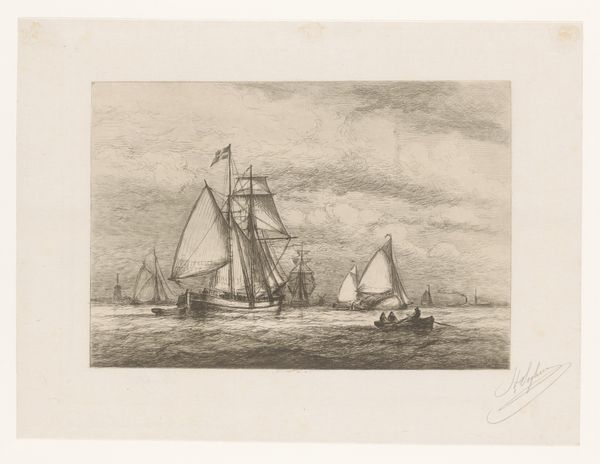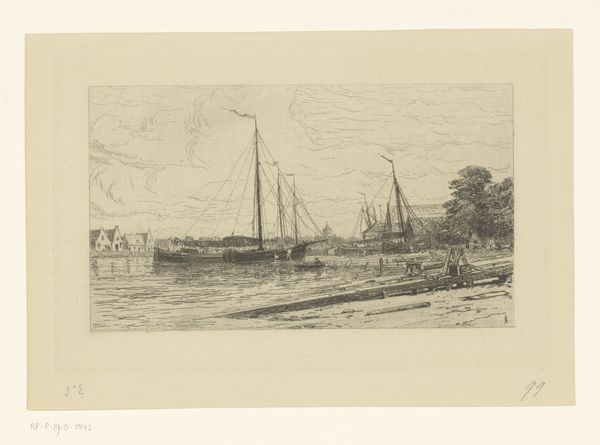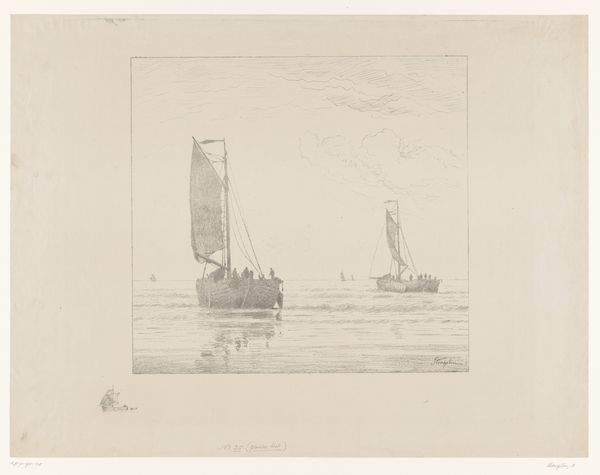
print, engraving
#
aged paper
# print
#
old engraving style
#
landscape
#
romanticism
#
genre-painting
#
engraving
#
sea
Dimensions: height 284 mm, width 402 mm
Copyright: Rijks Museum: Open Domain
Editor: This is Ferdinand Victor Perrot’s "Bretonse kotter op zee," an engraving from between 1837 and 1843. It’s quite striking. The detail is incredible, especially considering it's a print. It makes me think about how reliant people were on these boats back then. What’s your take on this piece? Curator: From a materialist perspective, I find myself drawn to the engraving process itself. Consider the labor involved in creating such intricate details on a printing plate. Each line, each shadow, represents hours of meticulous work. How does this intense labor relate to the perceived value of the print versus, say, a painting? Editor: That’s interesting, I hadn't thought of it that way. It definitely makes you appreciate the craftsmanship. The waves also look incredibly difficult to achieve with the engraving medium, right? Curator: Precisely! And beyond the individual labor, think about the socio-economic context of printmaking at this time. Prints made art more accessible. So, how does this democratizing force of printmaking challenge the elitist perception of fine art, especially given the subject matter depicting everyday seafaring life? Editor: So, in a way, the material – the print itself – connects with the wider cultural context of art consumption at the time? I am getting the social context from the way in which the labour put on a copper plate allowed a print to become an affordable and replicable object, isn't it? Curator: Exactly! The engraving becomes more than just an image; it becomes a commodity embedded within a system of production, consumption, and social accessibility. Think about the markets these prints served – not just wealthy patrons, but also a burgeoning middle class eager to possess representations of the world around them. Editor: Wow, I’ve definitely learned to look at prints differently. It’s not just about the image, it's also about the work that went into its creation and how that played a part in the artistic system. Curator: Indeed! And considering how readily prints were consumed, we ought not to ignore what sort of manual and mechanical actions people undertook while interacting with art.
Comments
No comments
Be the first to comment and join the conversation on the ultimate creative platform.

